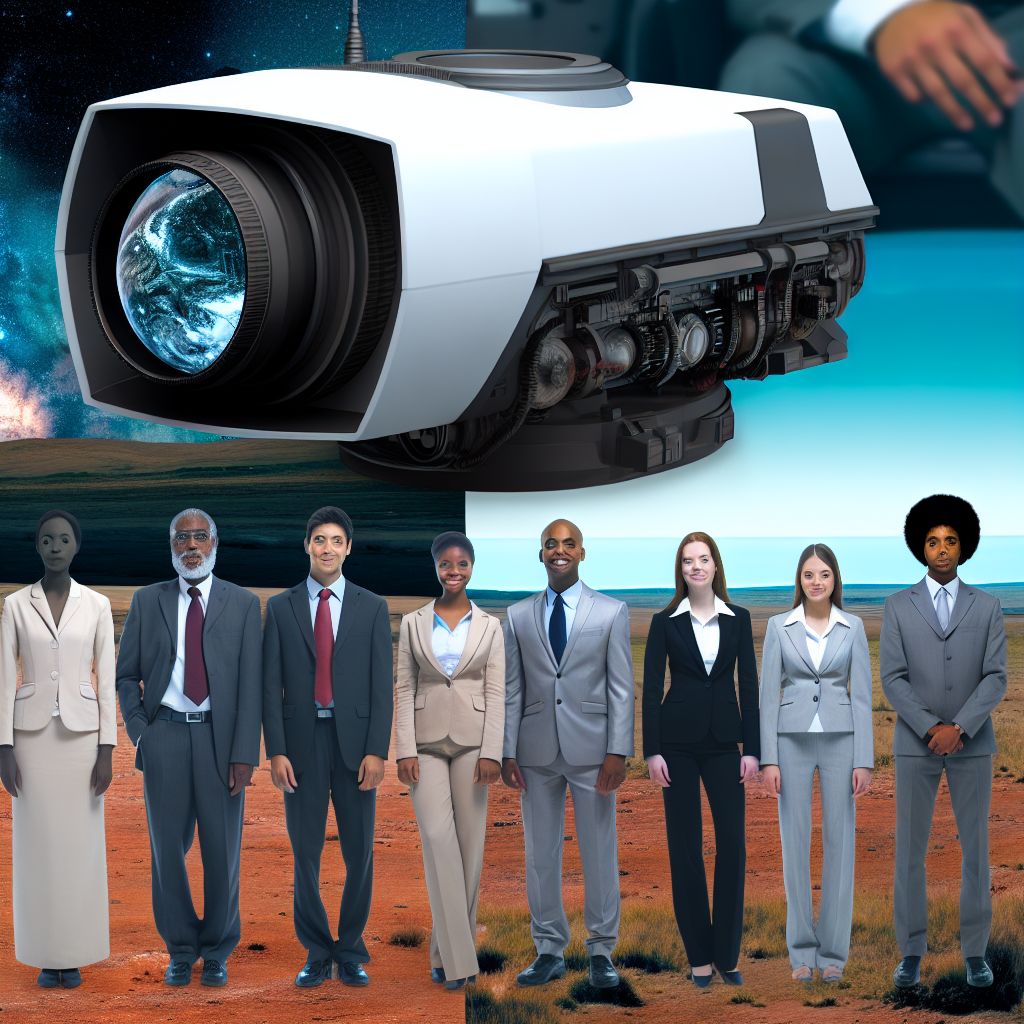Deutsch: Fortschrittliches Raumfahrtsichtsystem / Español: Sistema Avanzado de Visión Espacial / Português: Sistema Avançado de Visão Espacial / Français: Système de Vision Spatiale Avancé / Italiano: Sistema Avanzato di Visione Spaziale
Advanced Space Vision System (ASVS) in the Space industry context refers to sophisticated imaging and sensory technologies designed to enhance the visual capabilities of Spacecraft, including satellites, space probes, and crewed spacecraft. These systems incorporate a variety of sensors and imaging technologies that provide Critical data for navigation, scientific research, and operational tasks in space.
Description

An Advanced Space Vision System typically includes high-resolution cameras, multispectral and hyperspectral sensors, LiDAR (Light Detection and Ranging), and other advanced optical and digital technologies. These systems are designed to operate in the Harsh conditions of space, dealing with challenges such as extreme light Variability, Radiation, and microgravity. They play a crucial role in enabling spacecraft to autonomously navigate, avoid obstacles, analyze Celestial and planetary surfaces, and assist in docking procedures.
Application Areas
- Navigation and Maneuvering: ASVS is used to navigate spacecraft through complex environments, such as asteroid fields, or to safely approach other spacecraft or space stations.
- Scientific Observation and Research: These systems are vital for capturing detailed visual and spectral data from planets, moons, asteroids, and other celestial bodies, aiding in geological, atmospheric, and other scientific studies.
- Earth Observation: On satellites orbiting Earth, advanced vision systems are used for Monitoring Weather patterns, tracking environmental changes, and observing natural disasters in Real-time.
Well-Known Examples
- Mars Rovers' Imaging Systems: The cameras and spectral imagers on NASA’s Mars rovers, such as Curiosity and Perseverance, are examples of ASVS. They provide high-resolution images and data that are crucial for selecting navigation paths and scientific targets.
- Canadarm2’s Vision System on the ISS: The robotic ARM equipped with cameras and sensors, uses an advanced vision system to assist in capturing and docking incoming cargo spacecraft and performing maintenance tasks on the International Space Station.
Treatment and Risks
Implementing an Advanced Space Vision System involves several challenges and considerations:
- Data Handling and Processing: These systems generate vast amounts of data that require effective processing algorithms and storage solutions, often necessitating real-time data processing onboard due to limited Bandwidth for data Transmission to Earth.
- System Reliability and Redundancy: Given the critical nature of these systems, they must be highly reliable. Redundancy is often built in to ensure functionality even if one part of the system fails.
- Environmental Resistance: Components must be designed to withstand radiation, extreme temperatures, and mechanical stresses of Launch and space Operation.
Summary
In the space industry, an Advanced Space Vision System is essential for the enhanced visual capabilities it provides to spacecraft. These systems enable more effective navigation, scientific research, and operational management, significantly contributing to the success and safety of space missions.
--
Related Articles to the term 'Advanced Space Vision System' | |
| 'Camera' at quality-database.eu | ■■■■■■■■ |
| Camera in the context of quality management refers to a tool or device used for capturing visual information, . . . Read More | |
| 'Satellite Imaging' | ■■■■■■■■ |
| Satellite Imaging in the Space industry refers to the capture of images of Earth or other Celestial bodies . . . Read More | |
| 'Light Detection' | ■■■■■■■■ |
| Light Detection: Light detection in the Space industry refers to the use of sensors and technologies . . . Read More | |
| 'Camera' | ■■■■■■■ |
| In the aerospace industry, a camera is a device that is used to capture images or video, typically using . . . Read More | |
| 'Mastcam' | ■■■■■■■ |
| Mastcam is a sophisticated imaging system used in the Space industry, primarily deployed on Mars rovers . . . Read More | |
| 'Optoelectronics' | ■■■■■■■ |
| Optoelectronics is a specialized field within the Space industry that encompasses devices and technologies . . . Read More | |
| 'Retina' at psychology-lexicon.com | ■■■■■■ |
| Retina: The retina is a complex network of cells that covers the inside back of the eye. These cells . . . Read More | |
| 'Threshold' at psychology-lexicon.com | ■■■■■■ |
| Threshold in the psychology context refers to the level or point at which a stimulus is strong enough . . . Read More | |
| 'High-resolution' | ■■■■■■ |
| High-resolution: High resolution refers to the level of detail and precision in an image, measurement, . . . Read More | |
| 'Cubesat' | ■■■■■■ |
| Cubesat: A CubeSat is a type of miniaturized satellite that is used for a variety of purposes, including . . . Read More | |
